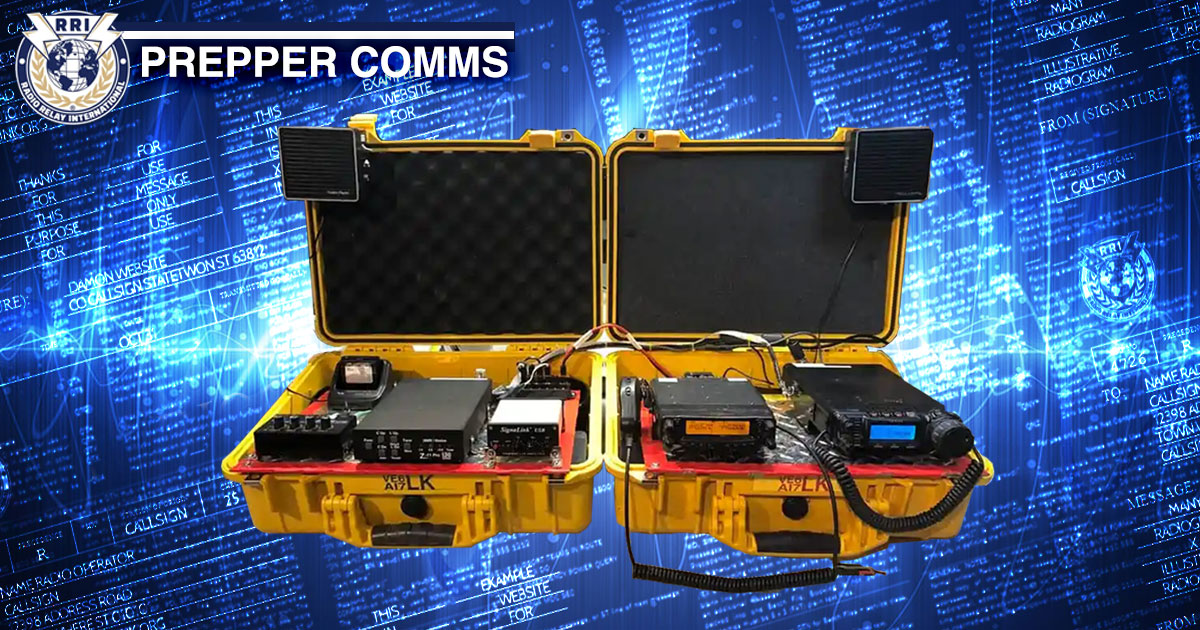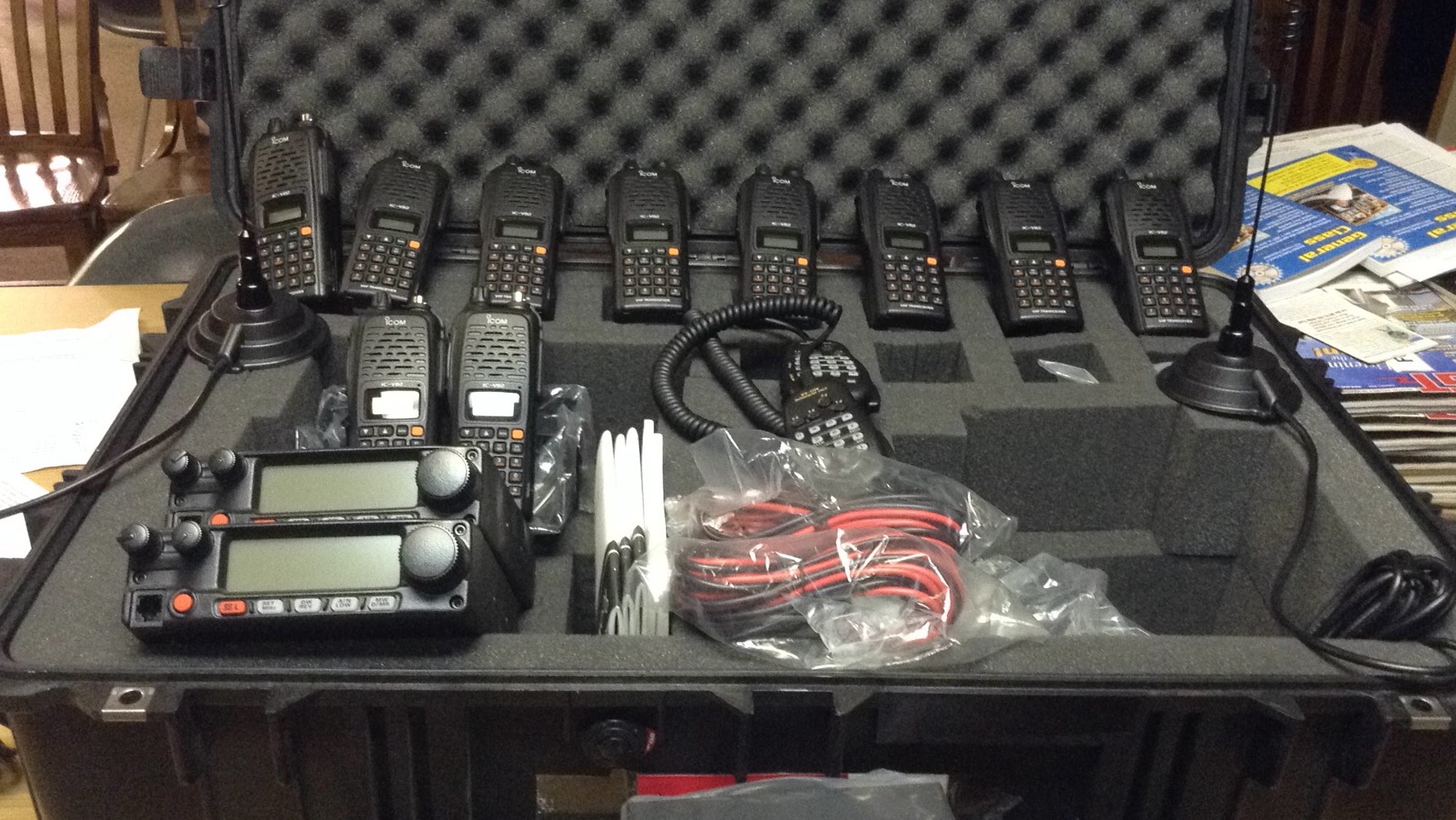
Radio Relay International writes about communications in Prepper Comms: Connectivity versus Communications
It appears an entire cottage industry has emerged in which various vendors sell ham radio, GMRS, and similar resources as a preparedness tool. Search YouTube using terms such as “prepper” and “communications” and one will find hundreds, if not thousands of videos that promote various communications solutions, many of which focus on ham radio. Unfortunately, one can argue that many of these videos and sales pitches amount to the proverbial “blind leading the blind.”
There is much to be said for establishing communications alternatives that support neighborhood and community preparedness. Prepper groups are fond of the term “MAG,” which translates to mutual assistance group. Having a “MAG” composed of like minded and equally dedicated and prepared people can be a very good thing, particularly if the participants are all level-headed and equally dedicated to preparedness. We won’t digress further into that subject except to assert that developing the ability to communicate in the event of disruptions to the cellular grid and local/regional Internet connectivity is a prudent preparedness step. Therefore, let’s examine the realistic communications requirements for one’s preparedness program.
Most communications are local:
This assertion should not come as a surprise. It’s been proven through 175 years of telecommunications history. The volume of communications traffic on local networks is typically higher than that on long-haul circuits. It’s simply a reflection of the nature of social hierarchy. In a SHTF situation, circumstances usually dictate that local issues are addressed first. For example, if summoning assistance, the person from whom you request assistance must be close enough to provide the needed aid. As a result, most members of one’s prepper “tribe” do not need to be ham radio operators. Common resources such as FRS/GMRS (interoperable), CB radio, or MURS are often more than adequate for covering local terrain. Even hard-wire resources such as field phones can be pressed into service between closely located homes or facilities.
The gateway process as force multiplier:
If a MAG establishes a local communications network using commonly available, inexpensive technology, messages leaving the local network can be transferred to national/international infrastructure by “gateway” operators with long-haul capabilities. One to three operators (for redundancy) in a group that have the necessary license, training, and equipment to communicate over longer distances can move message traffic between the local network and long-haul infrastructure services. For example, if someone in your prepper group needs to send a message to a relative 1000 miles away, he simply formats a radiogram, transmits it to the gateway operator, and the latter individual injects it into the long-haul network.
The gateway function is a simple force multiplier process, which allows everyone in a group to send and receive medium/long-haul messages even if they do not have an interest in communications systems as a technological hobby or avocation. The process is also not economically regressive. After all, there’s a big difference between the cost of a new or used CB or GMRS radio and a modern ham radio transceiver and associated equipment.
Gateway requirements:
While impressive and elegant, HF radio and similar resources, with their ability to communicate over long distances, are of little value if communications with distant points are established randomly. In other words, even with survivable HF radio capabilities, some type of standardized infrastructure designed to efficiently relay and route messages to their destination is required. For this purpose, one might use Winlink (radio email), the RRI Digital Traffic Network, or manual mode traffic networks using CW, SSB, or various narrowband digital methods. Each method will offer both advantages and disadvantages depending on circumstances and operational requirements. These pros and cons are outside the scope of this article but suffice to say that the ability to exchange signal reports with random stations around the country is NOT the same as rapidly and accurately transmitting record message traffic to a third party 200 or 2000 miles away. For that, one needs not only infrastructure, but one also needs training, which brings us to our final point……
Connectivity is NOT the same as communications:
The prepper community, and even some Amateur Radio emergency communications volunteers, tend to perceive disaster communications in a “break glass in time of emergency” fashion. Using a bit of imagery, the “ham radio” is an object similar to a fire extinguisher in a public space. The “ham radio” (noun) sits in a red box labeled “break glass in case of emergency.” In the mental fantasy of the prepper, he will simply break the glass, turn on the radio, and start communicating. Unfortunately, “reality bites.” One can guarantee that 100-percent of the time, prepper communications will suffer in myriad ways. Messages will arrive garbled, content will be missing, assumptions regarding content will be made, and fatal errors in messages, tactical or record message, will hamper organizational response. In other words:
THE ABILITY TO ESTABLISH CONNECTIVITY IS NOT THE SAME AS THE ABILITY TO COMMUNICATE! (article continues)

 Chris at Off Grid Ham has an article up, talking about the danger/effect of heat on your batteries.
Chris at Off Grid Ham has an article up, talking about the danger/effect of heat on your batteries. 




 The communications team has an amateur radio packet bulletin board system set up for member radio operator use. Operators who want to use the system should contact KW4MP or KC7QHE for help setting up your radio and computers to access the system.
The communications team has an amateur radio packet bulletin board system set up for member radio operator use. Operators who want to use the system should contact KW4MP or KC7QHE for help setting up your radio and computers to access the system.
